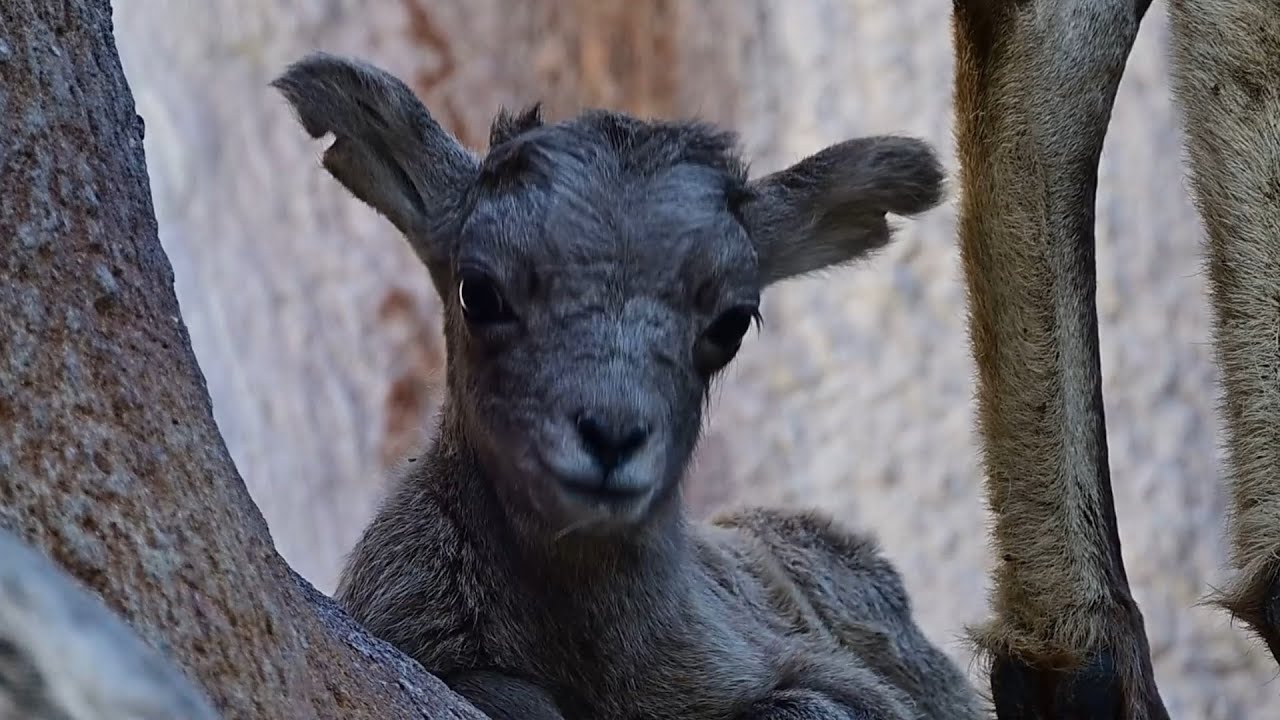– The biological and social behaviors of Boisterous Bighorn Sheep Lambs
– Strategies for the conservation and management of Bighorn Sheep populations
– The role of zoos and wildlife reserves in educating the public and preserving species
– Detailed insights into the lifecycle and habitat requirements of Bighorn Sheep
– Challenges and solutions in maintaining healthy ecosystems for wildlife conservation
Boisterous Bighorn Sheep Lambs, Times Two!, captivate observers with their vigorous play and remarkable agility. These lively creatures are not only a testament to the resilience and complexity of wild species but also serve as crucial indicators of the health and stability of their ecosystems. Understanding their biological and social behaviors is key to ensuring their survival and fostering conservation efforts.
Bighorn Sheep, known scientifically as Ovis canadensis, are distinguished by their large, curved horns and rugged mountain habitats. These mammals are well-adapted to the steep, rocky terrains of North America, from the desert mountains of Sonora to the snowy peaks of Alaska. With their boundless energy and curiosity, the young lambs play a critical role in learning the skills necessary for survival in these harsh environments.
The conservation and management of Bighorn Sheep populations pose significant challenges, including habitat fragmentation, disease transmission from domestic sheep, and climate change impacts. Effective conservation strategies involve a multifaceted approach, incorporating habitat preservation, wildlife health monitoring, and controlled hunting regulations to maintain healthy population sizes. Such efforts are vital for ensuring the long-term survival of these iconic mountain dwellers.
Zoos and wildlife reserves play a pivotal role in the conservation of the Bighorn Sheep by facilitating research, breeding programs, and public education initiatives. These institutions provide invaluable opportunities for scientists to study the behavior, genetics, and health of Bighorn Sheep, contributing to broader conservation and management strategies. Additionally, zoos and reserves foster a deeper appreciation and support for wildlife conservation efforts by engaging the public with the natural world.
Understanding the lifecycle and habitat requirements of Bighorn Sheep is essential for their protection. From the steep mountain cliffs, they easily navigate to the grassy plains where they graze; each aspect of their habitat is critical for survival. The annual reproductive cycle sees rams engaging in dramatic battles for the opportunity to mate, leading to the birth of lambs in the spring, who must quickly adapt to their precarious mountain homes.
Conservationists face various challenges in maintaining healthy ecosystems for Bighorn Sheep, including mitigating the impacts of human encroachment and climate changes. Solutions involve collaborative efforts among government agencies, conservation organizations, and local communities to implement effective land use planning, wildlife corridors, and climate adaptation strategies. Such actions are crucial for preserving the Bighorn Sheep’s habitat and the biodiversity of their ecosystems.
In summary, Boisterous Bighorn Sheep Lambs, Times Two! exemplifies wildlife’s beauty and complexity, emphasizing conservation efforts’ importance. By understanding their behaviors, addressing threats to their survival, and supporting the roles of zoos and wildlife reserves, we can contribute to preserving Bighorn Sheep and their habitats. These efforts benefit these majestic animals and ensure the health and diversity of our planet’s ecosystems for future generations.
*****
Source Description
Baby alert, times two! 🐑🐑
Say hello to our two boisterous bighorn sheep lambs. Born last month, both lambs are healthy and growing fast. Guests can observe the duo bonding with the herd, exploring, playing, and nursing. Bighorn sheep are native to North America, including parts of California. They are a magnificent species that are an important part of the biodiversity of our region.
#ZooBabies #BighornSheep #Lamb


